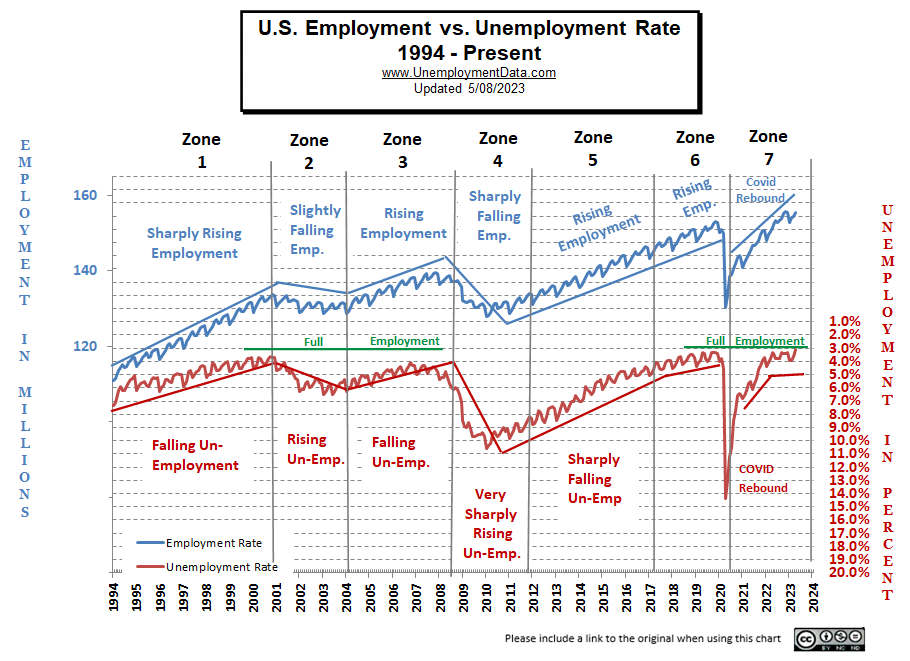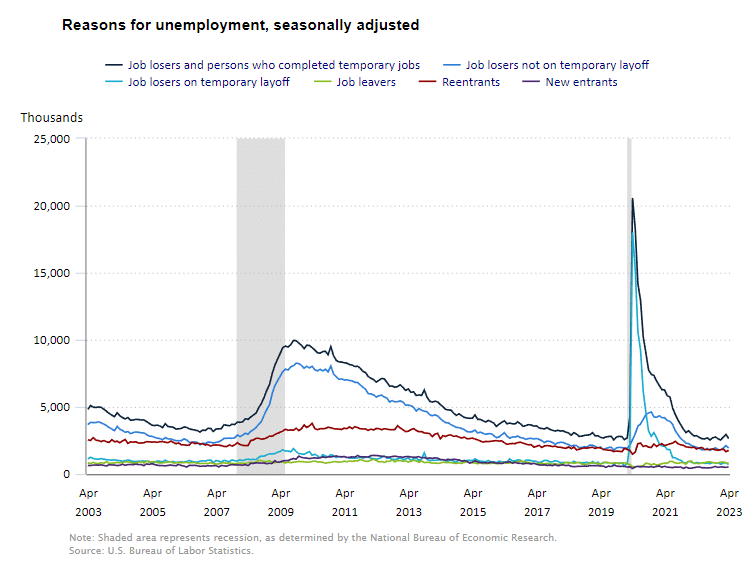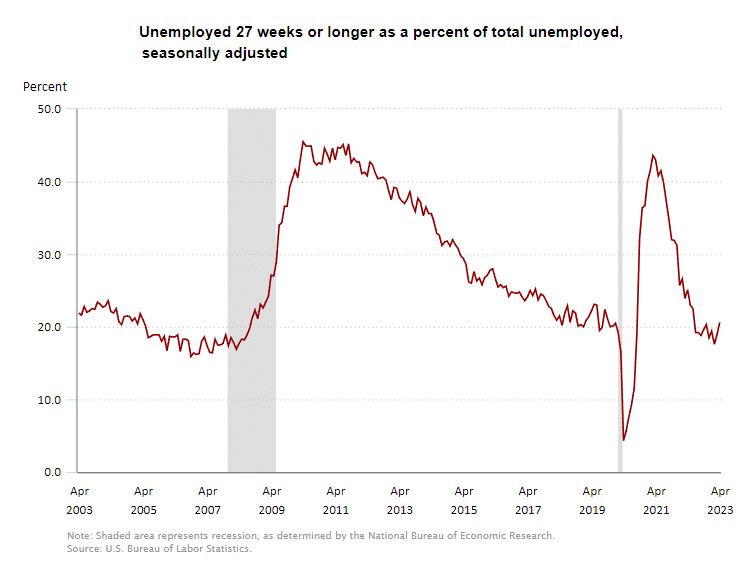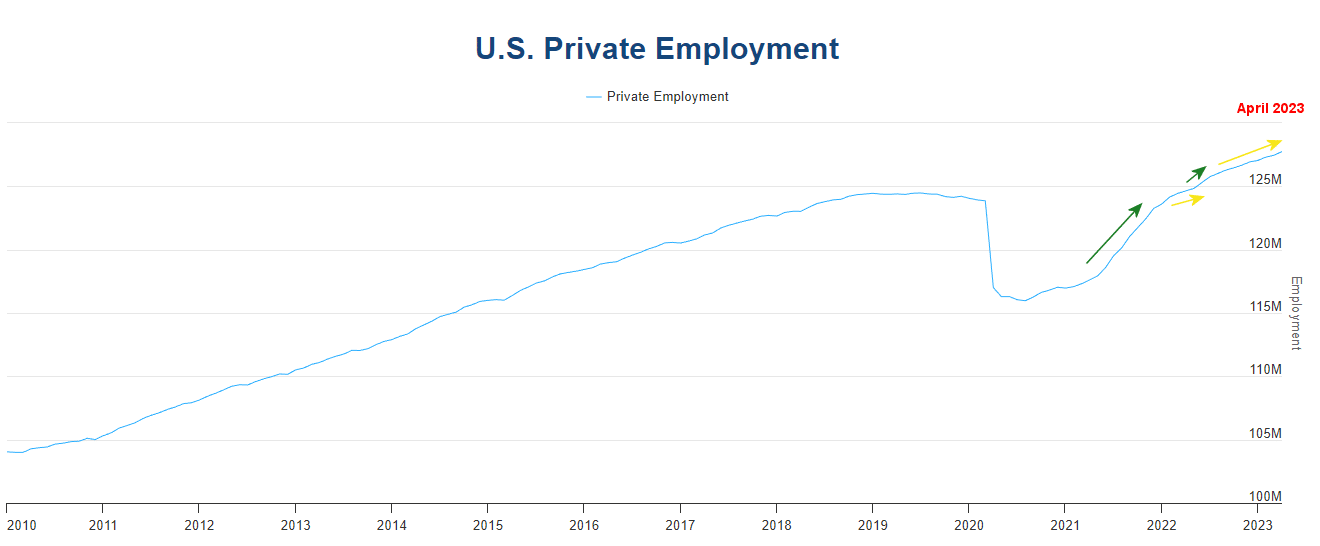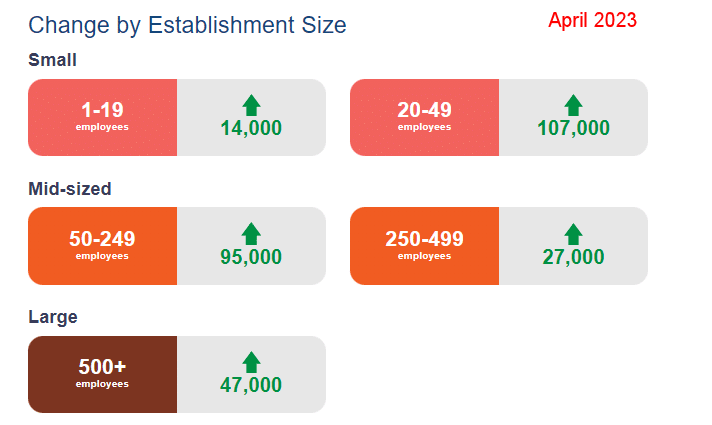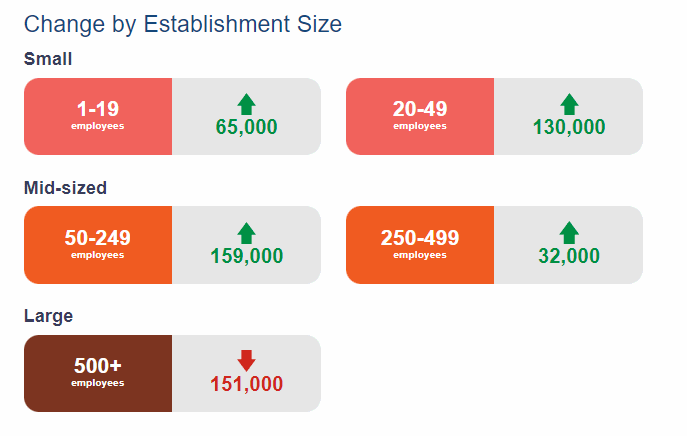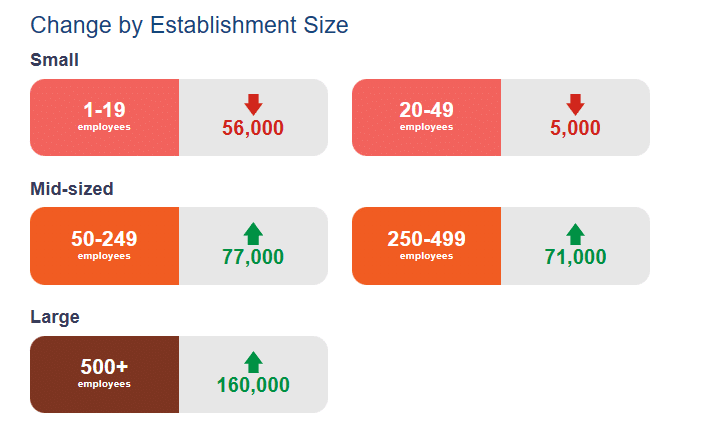The U.S. Bureau of Labor Statistics (BLS) released its employment / unemployment report for April on May 5th 2023.
Employment Near All-Time High
![]()
- Adjusted U-3 was 3.4% down from 3.5%
- Unadjusted U-3 was 3.1% down from 3.6%
- Unadjusted U-6 was 6.1% Down from 6.8%
- Labor Force Participation unchanged at 62.6%
- Unadjusted Employment rose from 154.445 million to 155.337 million
According to the Commissioner of the U.S. Bureau of Labor Statistics:
“Total nonfarm payroll employment rose by 253,000 in April, and the unemployment rate changed little at 3.4 percent, the U.S. Bureau of Labor Statistics reported today. Employment continued to trend up in professional and business services, health care, leisure and hospitality, and social assistance.”
You can read the full BLS report here.
As usual, they are talking about “Seasonally Adjusted Jobs”.
Looking at the Establishment Survey report, we see…
Originally the BLS reported employment of 154.517 million for March which they adjusted to 154.445 million. So they subtracted 72,000 jobs for March. They are now reporting 155.337 million jobs for April, which is an increase of 820,000 based on their original estimates or an increase of 892,000 based on their updated numbers.
Current Employment Rate Chart
November 2022 had the highest number of people employed in the history of the United States at 155,642,000. Then the typical January slump hit, taking employment down by roughly 3 million. But now employment is once again nearing that high. And if history is any indicator, we can expect employment to peak in June above November’s level before taking another breather. So far, as of April, employment is just a little over 300,000 shy of the all-time high. One way we can tell if the economy is beginning to falter is if the June high doesn’t exceed the previous November, or if November 2023 employment doesn’t exceed June 2023.
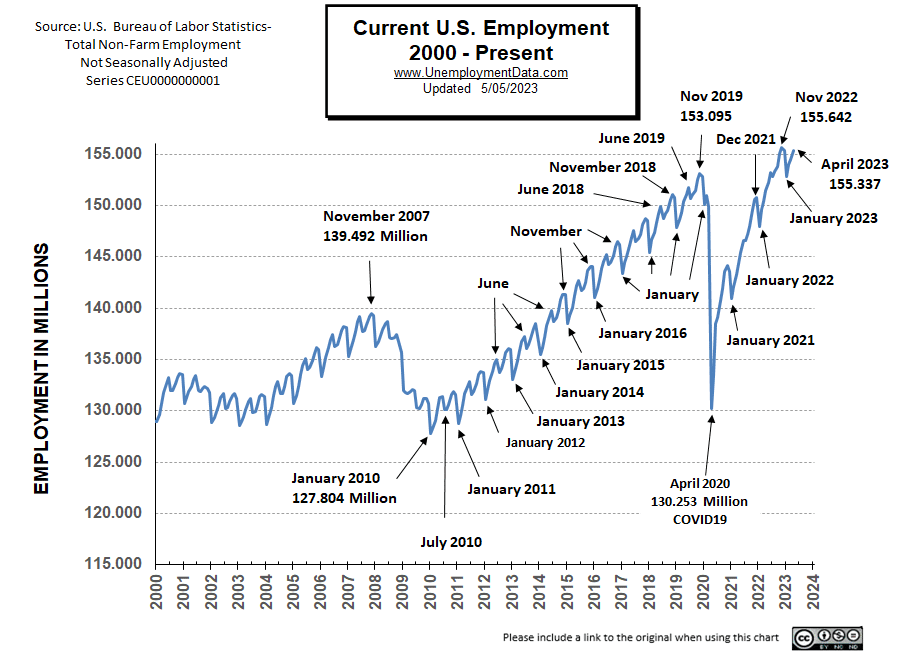
Full Employment?
Last month we said, “Full Employment is when everyone who wants a job has one. It is generally considered to be slightly above 3%. Although, other factors, such as unemployment benefits, can shift the level higher or lower. So, if unemployment benefits are extended from 6 months to 1 year, people will tend to stay unemployed longer, thus raising the unemployment rate.”
The following chart shows four examples of employment continuing to rise, but unemployment flattens out at just over 3%. Currently, the unadjusted unemployment rate is at 3.1%, as close to the theoretical full employment as you can get. Over the next few months, we will see how well reality relates to theory and if unemployment can actually get below 3%.
Note: The Unemployment rate is inverted to track the employment rate, neither is Seasonally Adjusted.
Full employment is not considered to be at zero percent because even when employers are having difficulty finding employees, some people are still unemployed due to either structural unemployment (mismatch between worker skills and job requirements, i.e., not enough training) or simply because they quit their job knowing it would be easy to find another (hopefully better) job. Often referred to as frictional unemployment (there will always be people who have quit or have lost a seasonal job and are in the process of getting a new job). See: Highly Skilled Worker Shortage in a Recession?
If the unemployment rate stays constant, but more people are working, where are these extra workers coming from?
Somehow the workforce has to be growing to accommodate these newly created jobs. They could be long-term unemployed (no longer counted in the workforce) returning to the workforce, they could be immigrants entering the workforce, or possibly retired people coming out of retirement because of an offer too good to turn down. This is generally facilitated by rising wages, but this month’s ADP report indicates that wage growth has slowed, possibly indicating that we are nearing the end of this boom.
Reasons for Unemployment
As we can see from the following chart, Job losers and persons who completed temporary jobs (black line) always creates some job turnover (i.e. temporary unemployment), although this month the level of turnover decreased somewhat. There is also a steady stream of reentrants, new entrants, and those on temporary layoff.
Duration of Unemployment
If the duration of unemployment begins climbing, it generally indicates a worsening economic climate. The following chart shows a falling less than 5 weeks of unemployment (which could indicate people are starting to be unemployed for longer times or simply that it is easy to find a new job). 5-14 week unemployment rose slightly, 15-26 week unemployment fell, and 27 weeks and over was relatively unchanged. The trouble starts when 15-26 week unemployment begins rising, followed by longer-term unemployment.
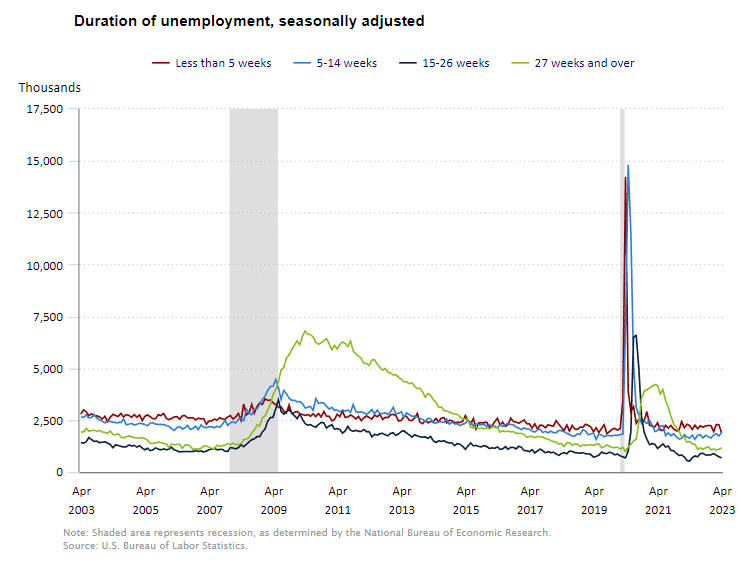
ADP® National Employment Report
ADP provides an independent (non-government) estimate of private-sector employment and pay, based on data derived from ADP client payrolls. According to ADP®, In collaboration with Stanford Digital Economy Lab, private employment was up in April.
ADP: Private employers added 296,000 jobs in April compared to 145,000 jobs in March.
Ms. Richardson is saying that although employers are still hiring, upward pressure on salaries has eased somewhat.
I’ve added some arrows to the ADP private employment chart, to indicate the slope of the line. The long green arrow shows the rapid post-COVID rebound in employment. Then in early 2022, the rate of increase slowed (small yellow arrow). Then around March 2022, the rate of increase picked up again (small green arrow). More recently, the rate of growth has moderated, possibly due to nearing full employment. As long as the slope is upward, the economy is still growing, despite the difficulty in finding qualified employees.
ADP Private Employment by Firm Size
ADP also lists increases by “firm size”.
This month, all-size companies added employees. Last month the only one that decreased was companies with 250-499 employees.
April ADP Changes:

